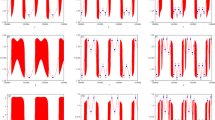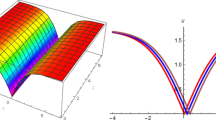Abstract:
The dynamics of a system where a mass is free to slide on a vibrating string is investigated as the excitation frequency is varied. One degree of freedom is thus added to the system studied by Helmholtz in which a mass was fixed on a vibrating string. This new system exhibits a specific dynamics characterized by the existence of a self- adaptative behaviour. When the driving frequency falls into wide and well defined frequency bands, a long transient is observed by which the mass adjusts its position so that the whole system becomes resonant. In the gaps between these bands, bifurcations give other equilibrium positions. A theoretical model is proposed. It accounts for all the experimental results. In the case where two masses are present on the string, two degrees of freedom are added and the set of equilibrium positions would be expected to be infinite. However, in the experiment, the two masses are observed to go to positions where they are symmetrical with respect to the middle of the string. A selection mechanism due to the string stretching is pointed out.
Similar content being viewed by others
Author information
Authors and Affiliations
Additional information
Received 15 October 1998
Rights and permissions
About this article
Cite this article
Boudaoud, A., Couder, Y. & Ben Amar, M. A self-adaptative oscillator. Eur. Phys. J. B 9, 159–165 (1999). https://doi.org/10.1007/s100510050751
Issue Date:
DOI: https://doi.org/10.1007/s100510050751




